
Abstract: There are two forms of creativity, our daytime
creativity and its unconscious complement (my conjecture). An unconscious
semi-autonomous spiritual power ever searches to manifest itself in human life.
In dreams it is often symbolized by the phallus, in alchemy by the spirit
Mercurius. It is hampered by modern-day rationalism and the reductive view of
the unconscious as mere drive nature and repressed content. What is even more
damaging to the unconscious creative force is the romanticizing tendency present
among Jungians and followers of New Age. The technique of ‘active imagination’,
due to a romantic obsession with symbolic imagery, is likely to block out a true
creativity. Hence conscious attachments cannot be abandoned. It makes impossible
the goal of the immersion in the unconscious, so central to mystical and
spiritual discipline. The corrupting influence befalls the very people who are
favourably disposed toward the unconscious, and their creative instinct is
wounded.
Keywords: creativity (“solar” and “lunar”),
painting, psychoanalysis, phallus, romanticism, mysticism, alchemy, Picasso,
critique of active imagination.
Introduction
A spiritual form of creativity seems to be a constant concern in the dreams
of modern people. In my dreams I discover that my clothes have been stained with
oil paint. It makes me irritated. Who is slopping oil paint on my clothes all
the time? Those dreams only stop when I start painting in oil. A good example
are the spiritual paintings of Australian aborigines (Wiki, here),
an activity that has gone on for 40,000 years. A case in point is the common
phallic symbol that typically points at spiritual content in dreams.
Psychoanalysts have caused great damage by again and again misinterpreting this
symbol in the traditional sexual way. Two examples of phallus dreams, which the
unconscious tirelessly produce in modern people:
A British male dreams: “I am studying ancient musical instruments, and have an ancient Egyptian trumpet. I take it off the wall. Somehow, a former work colleague is involved as an expert. I try to blow the trumpet, but have problems. I cannot blow hard enough to make a proper sound…”
An American male dreams: “I had a dream about a penlight that began to make a high pitched sound, which started off soft, but became louder and louder until the sound it made threatened to destroy the entire world…”
The trumpet is an eminent phallus symbol, as is the pen. It is a symbol of
spiritual power in some form. Sound is very “spiritual” in a sense, as
it is invisible. The spirit wants to manifest, but it needs help to do so.
However, the dreamers cannot yet handle the trumpet or pen. Likely, it is
something in themselves, some capacity which they underestimate, which holds the
key to sounding the trumpet and writing with the spiritual pen. A penlight is a
perfect phallus symbol — ‘phallus’ means the “shining one”. Light
is very “spiritual” in a sense. One can write about spiritual matters
with this pen. Obviously, it wants to make itself heard, and if nobody picks it
up it will scream louder and louder until the whole world is threatened.
Such dreams use the phallus to point at the spiritual creative factor, and to
highlight its immense importance. Creation by sound occurs in myth. According to
an Egyptian creation myth, the universe was created at the cry of the goose: the
sun was said to be an egg laid daily by Geb, the “Great Cackler”. He
took the form of a goose, whose piercing call awakened all the movement of
creation. Just imagine how the two dreamers would have been misled by their
psychoanalyst, had they attended therapy. Analysts steeped in the tradition of
infantile sexuality would have destroyed the healing attempt of the unconscious.
Psychoanalysis won’t make significant headway until it integrates into its
theory the notion of the creative spiritual factor, symbolized by the phallus.
The greater part of the unconscious is being neglected, but it demands
recognition. The unconscious is in psychoanalysis defined as the repository of
our drive nature. To this is added the ramifications of our relations with our
parents, etc. However, the unconscious contains another part. This is the “spirit”.
So spirit is that part of the unconscious which is not rooted in the
mundane. This unconscious force must be articulated. Psychoanalysis must
integrate the notion of the spiritual unconscious. Otherwise patients will
suffer because their unconscious urges continue to be neglected. The dream symbols
are likely to be misinterpreted, which makes matters worse.
The romantic entrapment
There is yet another factor that can damage an
healthy creativity. It is the romanticizing tendency represented by the
Jungian psychoanalytic school and the New Age movement. Carl Jung
said that he found the images of his patients much more interesting than those
of modern artists. He didn’t much like modern art. I do concede that there exist
much nonsense in the art world, but I do not agree with Jung’s evaluation.
Although the symbolic properties of images are quite relevant I am more
attracted to images on account of their organic nature. Modern art tends to
look into the spirit of matter itself, whereas the images of Jung and his patients
revolve around “ideas”. I am surprised at the great success of the Red Book
(Wiki, here).
Personally, I am not at all enthralled by Jung’s images. On the other hand, I
find oil paintings at a high degree of abstraction very attractive, like this
one with forest themes, by H.R. Berntson:
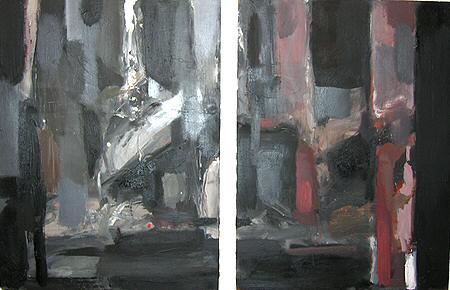
(“The
forest”. Reproduced with permission from
Galleri Överkikaren)
Such images really awaken something in me. This I suspect is the
spiritus mercurialis, which is the creative spirit of the unconscious.
In my daytime creativity I am good at programming computers and writing
intellectual articles, etc. But the unconscious form of creativity is something
quite different. It is hard to get at when one’s daytime creativity is of quite
another nature. It is as if all the means are at one’s disposal, but one lacks
the power to blow the artistic trumpet. What is lacking is the creative
instinct, it seems. To me, the organic nature of oil/acrylic painting, at a
reasonably abstract level, represents the inroad to the spiritual form of
creativity that springs from the unconscious. I have tried making “Jungian”
symbolic images, but they fail to engage me. Probably it has to do with their
ideational nature. They are too close to my conscious standpoint, which always
revolves around ideas.
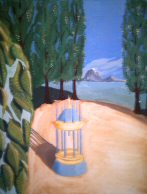 This
unfinished image represents an attempt of me to paint according to the symbolic
and romantic ideal. I have tried many times, but lose interest before the
painting is finished. There is a conscious attraction to such images as I can
relate to their symbolic meaning, but my unconscious finds the romantic attitude
appalling. So it’s like I am refused further energy to finish off the painting.
This
unfinished image represents an attempt of me to paint according to the symbolic
and romantic ideal. I have tried many times, but lose interest before the
painting is finished. There is a conscious attraction to such images as I can
relate to their symbolic meaning, but my unconscious finds the romantic attitude
appalling. So it’s like I am refused further energy to finish off the painting.
(unfinished “romantic”
painting)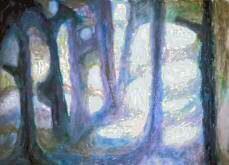 This crude nature
study is better. It is more “instinctive”.
This crude nature
study is better. It is more “instinctive”.
(oil pastel by me)
Sacrificio Intellectualis
Arguably, in order to find the true spiritual form
of creativity, one must make a “sacrificio intellectualis”,
and give up one’s daytime creativity. What I am searching for is a form of
creativity — no matter how unostentatious — that is capable of stirring
the creative instinct. (Perhaps Jung’s sandplay experiments were of this order.)
It coincides with that dive into the unconscious waters, away from conscious
involvements, which is termed the nigredo in alchemical terminology.
This does not lead to the dissolution of the ego, on Jungian lines. I
contend that it refers to the simple and unconscious life, in tune with creative
instinct. This is what the medieval alchemists experienced when they
experimented with their chemicals. The unconscious creative spirit, very
essential to the psychological process, came to expression (or tried to come to
expression) in the chemical work itself. Arguably, to find this form of
creativity is essential as it works as a carrier wave during the “dark
night of the soul”, the introvertive period in the spiritual journey of the
modern mystic. The creative activity has been underestimated in mystical
theology. Also, the way in which medieval alchemy tends to be interpreted,
solely on symbolical lines, underestimates the creativity rooted in instinct.
There is a lot of ideational content in alchemy, but one shouldn’t think that
this is the essential truth about alchemy, i.e., what alchemy is all about. This
would be equal to throwing the baby out with the bathwater. I don’t deny that
what underlies alchemy is the
psychological process. However, it doesn’t seem like psychological
images and archetypal ideas can stir up the said spiritual form of creativity,
at least not in many of us modern people.
Hence, I believe that the
rather “romantic” Jungian view of creativity could have damaging
consequences — in many cases it could thwart a true spiritual form of
creativity. So, to my view, the above oil painting by Berntson is truly
alchemical, whereas Jung’s own paintings represent more of a romantic spiritual
attitude, on Gnostic or theosophical lines. This might be the correct path for
some people, but for many of us it represents a blind alley. 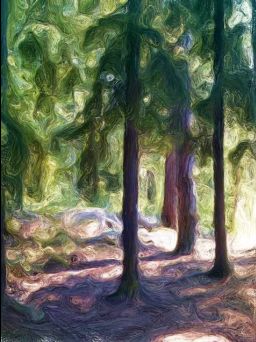 I have been experimenting
with photographs, which I elaborate in PaintShop
Pro
(Wiki, here) and Painter
Essentials
(Wiki, here). I took this photo the other day, which was converted to an “oil
painting” in Painter Essentials. It has some of that organic character
which I find attractive. However, a strange thing occurred. The program created
curious anomalies in the picture that look very much like eyes. They are looking
straight out of the trees, the roots, etc., although they are not all visible in
this diminished image. When I took the image, it seems as if the spirit of
nature, Mercurius, was looking back at me, although I wasn’t aware of it. As we
gaze into the unconscious, there is an archaic form of consciousness looking
back at us — the spirit imprisoned in matter. “Nature” in this case
represents the ‘materia prima’ of the alchemists. This “inferior”
substance is the stone that the builders rejected.
I have been experimenting
with photographs, which I elaborate in PaintShop
Pro
(Wiki, here) and Painter
Essentials
(Wiki, here). I took this photo the other day, which was converted to an “oil
painting” in Painter Essentials. It has some of that organic character
which I find attractive. However, a strange thing occurred. The program created
curious anomalies in the picture that look very much like eyes. They are looking
straight out of the trees, the roots, etc., although they are not all visible in
this diminished image. When I took the image, it seems as if the spirit of
nature, Mercurius, was looking back at me, although I wasn’t aware of it. As we
gaze into the unconscious, there is an archaic form of consciousness looking
back at us — the spirit imprisoned in matter. “Nature” in this case
represents the ‘materia prima’ of the alchemists. This “inferior”
substance is the stone that the builders rejected.
‘Materia
prima’ is primitive nature. In a dream I am urged to “follow the Negro”:
“I start following him as he successively becomes more like an animal. He
starts running on four legs, like a hound. He runs into the bush. I take after
him.” (In dreams of Westerners, black people typically play the
unflattering role of primitive humans). What does this mean? It means that I
ought to become “inferior, instinctual, and unconscious”, as an
advanced consciousness presents a hindrance to finding the ‘materia prima’.
In this process, creativity plays an important role. I argue that the instinctual
and “inferior” creative power abides in the unconscious. Jung devoted
his life to writing intellectual books. But his anima (in the shape of Sabina Spielrein, it seems) urged him to abandon his “superior”
function and instead devote himself to inferior “art” and sandplay. It
is probably the same motif as in my own dreams, where I am urged to abandon my
superior function. Jung, however, rejected the anima’s suggestion out of hand,
as an attempt to take control over consciousness. This is a very controversial
interpretation, as if the anima was being solely destructive. The result was
that he over-extended his conscious function. In the collected works he often
repeats himself. Arguably, he deviated into romantic creativity, as he had
rejected the unconscious creative source, rooted in instinct: the “creativity
of the Negro”, as it were.
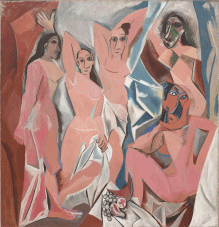 Picasso was inspired
by black African art, as in this example. Art rooted in the black soil
represents the ‘materia prima’, the stone which many in the Jungian school, and
the New Age movement, have rejected.
Picasso was inspired
by black African art, as in this example. Art rooted in the black soil
represents the ‘materia prima’, the stone which many in the Jungian school, and
the New Age movement, have rejected.
(Picasso:
Les Demoiselles d’Avignon.
Wikipedia, public domain)
The Stone
The Stone of the alchemists, I suggest, is the raw material
for a creativity rooted in the spirit, which we discover in the unconscious. In
our everyday lives we are very much occupied with the mundane, whether its
pleasure, search for wealth, power, etc. So that’s why the unconscious produces
the fantasy of the spiritual Stone, like in my own dream from decades ago when I
dreamed about finding the “uranium stone” in the Holy land. In the
dream I immediately started to work diligently to refine its properties,
together with my companions. The Stone generates a spiritual form of
creativity, because it contains another kind of energy than the mundane.
However, being creative often means to occupy oneself with matter, as in the
work of the artist. Actually, artists have always worked with led which they
have turned into “gold”, in a sense. ‘Led white’ has superior
qualities, but today’s artists seldom use it since it is poisonous. ‘Naples
yellow’ was originally made of led, but it’s seldom used today.
The alchemical gold, or the Stone, as the end product of the opus, is
often interpreted as the reunion of the body with the conjugate of spirit and
soul, the latter having undergone refinement. It is thus a symbol of the self
(cf. “Jung Lexicon”, here).
But such a symbol harbours a multitude of opposites. To interpret it in terms of
a dark and unconscious form of creativity, a spiritual source of energy that can
be exploited, is merely looking at it from another angle. To achieve the ‘unio
mentalis’, a form of spiritual one-sidedness, is probably necessary to get at
this source. I once had the following dream. “…I was about to enter a
chess tournament in a dark palace. But I had some time left so I went to a
nearby city where I visited a beautiful rose-red castle. I was thinking that I
should paint it some day. But now I had to return to the dark and gloomy
palace to take part in the demanding chess tournament.”
The
rose-red castle, and the notion of painting it, represents a romantic day-time
creativity, whereas the rather technical chess tournament signifies a
creativity related to the unconscious. It is similar to attending a mathematics
course, solving integrals and differential equations. The spiritual
(alchemical) work is like gazing into a chequered little world where variations
are discovered. It seems to imply that consciousness should focus on a little
world, symbolized by the alchemical vessel. The symbol of chess is apt. The
chess board represents the vessel, in which the warring elements give birth to
variations under the supervision of a focused consciousness. It is partly the
conscious function that causes the variations to take place, as it adds “heat”
to the vessel. However, there is also an opponent in the game, representing
another kind of consciousness. This is the serpent’s eye gazing back at us from
the unconscious. It is a faint light, but it represents an age-old wisdom.
The spirituality of the Stone (the spirit Mercurius) emerged in the
medieval era. The earlier antique form of spirituality was of another kind. It
died out in late antiquity. Plutarch (d. AD 120) relates (in Cessation of the
Oracles) that the passengers of a ship, while passing by a group of islands on
the coast of Greece, heard a mysterious voice proclaiming that “The great
god Pan is dead”. At this there came the sound of a mighty groaning and
lamentation from countless throats. Emperor Tiberius set up a commission to
investigate the matter. They managed to find witnesses who corroborated the
story (cf. Walker, “Gnosticism”, pp.72-73). A god can never really die, of course,
but the epoch of Pan was over. I myself have dwelled with this spirit in my
life. In one dream a voice told me: “You ought to be like Pan for a time.”
It means to immerse myself in the waters of antique spirituality. But I cannot
stay there because it leads nowhere, although it is good for healing purposes.
Finding the Stone, which contains the spirit Mercurius, is a more advanced form
of spirituality. It signifies, I think, a creativity rooted in the spirit, that
remains in the unconscious. When this source has been found one can be creative
and continue to “search”. Life becomes rooted in the spirit, and the
personality is no longer psychologically dependent on the worldly energies.
As to the phenomenon of “alchemical humbug”, e.g. people
who claim to have possession of the Stone in its material guise. I think this
belongs to the category of ritualization, i.e. the way in which people
tend to create a new religion out of an impressive phenomenon. Today’s
consumerism implies that people go on pilgrimage to shopping centres and
purchase fetish objects. This richness in furnishings gave rise to the “cargo cults” (Wiki,
here)
among primitives who adopted white man’s cult. So the primitives “imitated”
white man’s lifestyle and made a ritual out of it. This ritualizing factor is
born out of man’s religious temperament. Likewise, there is a tendency, on
lines of New Age, to make a religion out of alchemy. Personally, I tend to be
favourably disposed toward religion, in a general sense, because it belongs in
human nature. However, an alchemical religious attitude can rouse annoyance as
it contravenes the very spirit of alchemy, namely as an alternative path to
religion. If people start worshipping the Stone as a material object created in
the laboratory, then it can put the lid on the said spiritual creativity.
Alchemy, I think, is meant to go beyond religion, i.e., not imitating through
ritual, but experiencing it yourself.
I have called this phenomenon “romantization”, the tendency
to romanticize the spiritual path, through ritualization and fantastication.
After the Middle Ages, alchemy became more and more romantic, high-flown,
occupying itself with beautiful imagery, etc. But the Stone is hidden in the
mud. As it appears crude and simple it tends to be neglected, but it can be
refined immensely.
Enlightenment versus unconsciousness
The
‘unio mentalis’ is concerned with separation from ordinary desires and
affliction caused by life. It is a form of spiritual one-sidedness, central to
Christian mysticism and Buddhism. The Gnostics and the psychoanalytic movement
want to achieve ‘enlightenment’, whereas Christian mysticism revolves around
‘the dark night of the soul’, i.e. entering an unconscious state. Spiritual
discipline should be capable of integrating both these aspects. In fact, alchemy
could be understood along these lines. First, enlightenment is achieved, then
the artifex commits himself to unconsciousness. Both states are characterized by
different forms of one-sidedness, I suppose. This dream of a British male
illustrates the process:
“I was outside time and space, about to enter existence. In front of me was a tapestry, which I was studying. A man walked across the tapestry (which came to life), and the sun was visible in the sky. Suddenly the sun became his head, and then I entered the scene and became the man.
Next, I was Picasso, standing on a beach somewhere by the Mediterranean Sea. I had been commissioned to paint Christ walking on the waters, and I felt that in order to do this work properly, I must try to do it myself. I tried to do so, and sank beneath the waves. As I sank down for the third time, apparently drowning, a beautiful silvery-green dolphin appeared. It held me in its mouth and swam back to the shore, leaving me safely on the beach.”
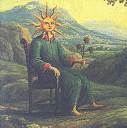
The dreamer first becomes enlightened. The sun is his head, which would mean
identification with the fatherly sun-god. (The man with the sun head is a
recurrent theme in alchemy.) Then he becomes Picasso and steps out on the
water. This probably signifies entering an unconscious state. Picasso was an
unconscious and “primitive” person who made Negro art (he was inspired
by black African art). The ability to walk on water probably symbolizes the
capacity to remain unconscious. It is like being able to breathe under water,
that is, one can sustain life in an unconscious condition. In this state the
artifex has recourse to a primitive creative capacity, such as Picasso’s form of
creativity, which was “nonsensical” in a sense, following the ideal of
unconsciousness. But the other pole wasn’t known to Picasso the artist.
Arguably, it is necessary to know the two poles of light and darkness to be able
to act as mediator. First comes enlightenment, and then comes the other
opposite, descent into unconsciousness, to remain in a self-effacing
condition, which is characteristic of the mystical traditions, I think.
Picasso could be understood as the god of the unconscious, i.e.
Mercurius. As the dreamer identifies with him, he becomes unconscious. The
dreamer carries the role of the mediator between the two gods. That’s why he
enters the water, i.e. he enters the unconscious, as the Christ descended into
the underworld in the time between his crucifixion and resurrection. C.G. Jung says that the sonship of God must be extended to many more
individuals. This is also the underlying goal of Christian mysticism. The
dreamer is brought back to ‘terra firma’ again by the benevolent force of the
unconscious, signifying “resurrection”. (I don’t know what it means
that the dreamer fails to walk on water.) In Picasso’s form of unconscious
creativity, the part pertaining to unconsciousness is fulfilled, but
enlightenment risks being forgotten. Artists, practical alchemists, and New
Agers, are all well-trained in the art of abiding in unconsciousness, but
enlightenment must be achieved in order for the artifex to act as mediator
between heaven and earth.
This is logical, isn’t it? Conscious and unconscious, spirit and
soul, must be united, according to the alchemical formula: coniunctio Solis
et Lunae. But for this to be achieved, consciousness must be conquered.
People are naturally reluctant to becoming conscious, because it is a painful
process, especially the realization of the evil nature of mankind, and the
ongoing destructive processes in the world. It is always easier to remain in a
kindergarten existence, remaining comfortably unconscious. Picasso’s art was “silly
and nonsensical”, as many have argued. Yet it is a potent unconscious
power, and it is therefore a good thing, when it serves the purpose of slaking
the fire of the sun. This is reminiscent of the green lion devouring the sun in
alchemical imagery. However, if there is no sun to devour, but only a faint
shining cloud, then nothing is gained by the spiritual rituals or the painting
activities, except the creation of art. Then it’s merely an hobby, and the
hobbyist generally has no success on the spiritual path.
To sink into
unconsciousness is a very potent action. The artifex himself becomes the seed
that is planted in the earth. To entertain an unconscious state, to be involved
in “nonsensical” activities like making abstract art à la
Picasso, or to dabble with chemicals, is very good, but only if the person is
already laden with conscious power, which is now being injected into the
unconscious. But if the spiritual searcher, or contemplative, hasn’t achieved “enlightenment”,
i.e. become conscious enough, then the descent into nigredo (darkness of
the soul) will not bring fruition. We normally speak of unconsciousness as
destructive and unfavourable — the root of all evil in humankind. But there
is a benevolent side of this quite dangerous phenomenon. That primitive,
unconscious, “Picasso-creativity”, is capable of nourishing a benign
condition of unconsciousness. It is a golden form of unconsciousness, a valuable
unconsciousness.
A benign unconsciousness
When
consciousness has developed to an acute level, it can relieve the pressure and
have an wholesome effect, if one allows oneself to sink down into
unconsciousness. A descent into the unconscious need not entail the dissolution
of the ego. It refers to the simple and unconscious life, to remain in a
self-effacing condition, in tune with creative instinct. [1]
The benign form of unconsciousness (‘the dark night of the soul’ of the mystics;
the ‘nigredo’ of the alchemists) is the “good side” of the dark deity,
as it were. Its realization is of immense import. Consciousness should not rule
supreme, but we must remain in tune with our heart, and with our instincts. For
instance, we mustn’t take upon our shoulders the moral burden of God, assuming
responsibility for all the brown-skinned people in the world. In fact, it is
better to remain unconscious of their sufferings than to do everything to
sustain them, following UN:s “Humanity Maximization Principle”,
which leads to nothing good. People today tend to program themselves with the
abstract values of consciousness and forget to listen to their heart. They think
they are empathic, but they are only slavishly following an ideological
algorithm programmed into their head. It has nothing to do with empathy.
There is another form of consciousness, a “dark” consciousness, which
leads us to withdraw into a smaller world. To care for our cat — that’s
empathic — because it is in tune with instinct. It is a lesson for
psychoanalysis to learn, that not every problem can be solved by realization,
realization, and yet more realization. Sometimes repression provides the
solution, to become comfortably unconscious. The following is the neurotic mantra of our
age: science and yet more science – technology and yet
more technology – welfare and yet more welfare – medicine and yet more medicine – economic expansion and yet more
economic expansion – globalization and yet more globalization – multiculturalism and yet more multiculturalism. The
collective identification with the conscious values has now reached such
proportions that the Western civilization can be said to suffer from neurosis.
This explains the sudden outbreak of psychotic destructivity, as in the recent
Norwegian mass-murder (July 22, 2011, Oslo and Utöya). Norway is at the
pinnacle of Western civilization, its richest and most beautiful country. It is
symptomatic that the devil (as the revolting unconscious) should strike back and
have his revenge at this very place. He made his deadly counterattack at a
social democratic political camp where youths were busy programming themselves
with the above mantra. The victims of this horrible crime were exponents of an
ongoing collective neurosis. The terror deed was symptomatic, a psychotic
episode in the collective psyche, as it were.
The creativity of the child
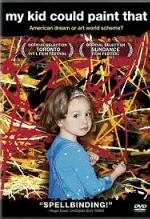
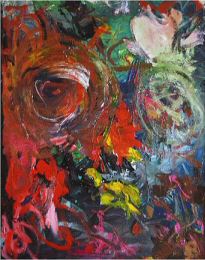
The gist of my
idea is that unconsciousness has a bearing on creativity in art. Take
for example the child artist prodigy Marla Olmstead, who could
paint masterpieces already at the age of 4. She was capable of this due to her
childish unconscious state. The channel to the creative spirit is still
open at this early age. That’s why so many artists, like Dubuffet, Jörn,
and Miro, have tried to emulate childish creativity.
It works reciprocally. In order to return to a blessed
and positive form of unconsciousness, we can make use of the instinctual force
of artful creativity, but not the romantic form, which is an aberration of
consciousness. One of the most popular images of all times is the Island of
the dead, by Arnold Böcklin. It symbolically depicts the
unconscious romantic position, namely the longing away from the turmoil of life to a stage of incubation in a protected temenos. It represents a healthy compensation of an exaggerated extraverted position.
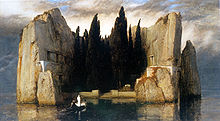
(The island of the dead, by Arnold Böcklin. Wikipedia)
The unconscious creative force is spirit. That’s why, in olden
times, people like Jackson Pollock and Asger Jörn,
would have been regarded as shamans. This view is apt because, in their
unconscious condition, they connected with the spiritual realm. Skeptics have
argued, in the case of Marla Olmstead, that she could not have
done such driven paintings at this low age. In a sense they are right. It is the
age-old spirit of the unconscious who has inspired the paintings. The artist is
merely the intermediary. That’s why you get the impression that this cannot be
right, some much older master must have a hand in these paintings. Anyway, this
is yet another indication that truly creative art is contingent on a
semi-autonomous spirit of the unconscious, something akin to a daimon.
In the above picture a “god” makes its appearance on the canvas. In
paleolithic times it is believed that children sat on the shoulders of parents
when painting. I suggest that the grownups realized that the children could make
contact with the spirit, as they could create a random pattern and then build
upon it, allowing divine images to take form. We know that paleolithic artists
made use of natural patterns in the rock. See article “Children’s Cave Art
Dates Back 13,000 Years” (here).
It was the surrealists who invented automatism, to paint or write
with as little conscious control as possible. Salvador Dalí
said that what characterizes a good painting is that you want to “eat”
it. A feeling in the stomach decides if it’s good art. An interesting technique
is to wet a canvas with colour, put creased paper on it, and then withdraw the
paper when the paint has dried for a time but is still wet. This will create
random patterns in the paint and fine shades. The painting can be developed from
this, and forms will grow out of the pattern. Today, this technique can be used
with acrylics and plastic foil. It is a good idea to start out from a randomly
generated pattern as it releases the processes of association, i.e. it
functions as an allure to the unconscious. Visually, unconscious archetypes
emerge out of the image as the figures take on a more concrete form derived from
the initial diffuse shapes. Asger Jörn’s paintings are highly
enjoyable. Jörn, who belonged to the COBRA art movement, was fond of
painting mythological motives, especially from Norse mythology. The trolls are
abundant, they emerge out of the painting. The COBRA members took exception to
the way that surrealism had developed. They focused on spontaneity and
experiment. They were inspired by children’s drawings, primitive art, and the
work of Klee and Miró.
Art springs from the unconscious, but
the unconscious does not follow the Platonic principle of “archetypal
necessity”. Rather, the archetypes could be denoted “diffuse shapes”,
because they are “spirit”. The archetypal expression springs from a
cooperative effort of conscious and unconscious. The artist must give substance
to the archetypes himself. So a random pattern generated with acrylic paint and
plastic foil is a perfect ground for painting as it contains “spirit”.
This is an ancient tradition that appears in all high cultures, i.e. the notion
that the spirit manifests in the diffuse patterns, for instance, in coffee
grounds. Random generated patterns have always been used for divinatory
practices because they contain “spirit”.
Active imagination as romantic creativity
Romantic
creativity is a perversion of the creative function. It can develop into a form
of addiction. As long as the individual leads the life of a dreamer, which is a
moderate form of romanticism, then not much harm is done. But ‘active
imagination’ implies that the romantic attitude is intensified. It risks
developing into addiction. I don’t know whether this is the case in all forms of
active imagination, but in many cases it represents a misuse of fantasy, such
as the tendency toward fantastication. The Jungian form of creativity depends on
the notion of ‘active imagination’. It revolves around archetypal symbols, which
accounts for its romantic character.
Is Jung’s active imagination a significant method of integration of
unconscious content, as asserted by Jung? Comparatively, therapy has
demonstrated its healing capacity in many cases, but is there any study which
proves the usefulness of active imagination as psychological method
rather than as spiritual exercise? Jung seemed to think that his own notion of
the journey of individuation, the successive confrontation with “shadow – anima/animus – mana personality – self”, can function as a substitute for
the spiritual traditions, although many people, due to their old-time
psychological constitution, ought to remain within traditional religion.
In Two Essays, and elsewhere, Jung describes the ‘anima’
as the transcendent function (i.e., bridge to the unconscious), and the ‘mana
personality’ that stands behind her (cf. “Jung Lexicon”, here). The question is, have followers of Jung
integrated the anima and encountered the mana personality, or is this Jung’s
personal universe? He relates no patient case histories, something which he
should be able to do, according to scientific standards.
Is this what practitioners of active imagination report? If not, then
active imagination, properly conducted, is better described as a spiritual
exercise aiming at relieving oneself of worldly concerns and maintaining a
wholeness of personality. Among the Christian mystics this method was known as
‘discursive meditation’. It was an exercise of the soul, meant to maintain focus
on the spiritual path. Jung, on the other hand, says that active imagination
concerns the integration of the anima as the ‘transcendent function’. At this
point, according to Jung, emerges the Wise Old Man, and images of the Self.
Archaic images are activated, portrayed by Jung in the Red Book
(Philemon, et al.).
Therefore it ought to be possible to demonstrate that people who
practice active imagination actually do observe this encounter with the Self and
also experience the concomitant changes in personality that must take effect
when the ego is overwhelmed by an entity vastly larger than itself, something
which is experienced as traumatic, and as a psychological death. This is how
Jung interprets the ‘nigredo’ stage in alchemy.
If this is not what practitioners of active imagination report, then
we are forced to conclude that active imagination is either (1) a form of hoax,
a throwback to 19th century spiritualism/romanticism, or (2) the practitioners
are fooling themselves to think that they are doing active imagination whereas
they are really only playing with fantasies or are reformulating conscious ideas
(e.g., in the fabrication of short stories), or (3) that active imagination,
properly conducted, is an exercise of the soul, meant to maintain focus on the
spiritual path, to motivate the adept to keep to the narrow path in order not to
regress to material obsessions. Following the terminology of Christian mystics,
the soul is thus kept sufficiently whole, preparing it for the contemplative
stage. In the Cloud
of Unknowing (Wiki, here), an unknown 14th century author explains that the spiritual
path is to remain in a state of unknowing.
An example of number (2)
is when M-L von Franz criticized Wolfgang Pauli’s text involving a
piano teacher. She said that this is not true active imagination because the
unconscious isn’t involved in the formulation of the images, but, rather, are
metaphors of consciousness. Personally, I have been doing active imagination in
writing for many years, and my unconscious has again and again urged me to
continue with it despite the fact that I experience no dramatic “change of
personality”, according to Jung’s model. But it’s like the unconscious is
fond of those unconscious products, which are expressed in dreams as colourful
fishes in an aquarium, or flowers, paintings, etc. It seems as if other
practitioners, as well, fall short of expectations. There are no dramatic
incursions of the Self, in the way Jung portrays.
I doubt that active imagination has this powerful capacity of archetypal
integration that Jung claims. This was also the position of his own anima,
something which he relates in his autobiography. When Jung was painting images
the anima told him that this was art which he was doing. He reacted
strongly against this and argued that the anima had tried to mislead him, which
is a controversial interpretation. I submit that she made an opposite
evaluation, to balance out his conscious standpoint. Arguably, he overvalued
this activity, or had adopted a lopsided view of it, and the compensating factor
was activated. The unconscious compensates the conscious standpoint.
Art history contains movements, such as symbolism, surrealism, and expressionism, which allow expression to the unconscious, to a degree. Arguably, Jungian active imagination is really a form of art. Novelist often say that their characters take on a life of their own. They are not mere constructions of consciousness. Thus, it is not obvious that the artist’s or the novelist’s activity is essentially different from active imagination. This could explain why the Jungian form of active imagination seems to have no pronounced effect on personality. It is, after all, an art form. The argument of Jung’s anima could be correct. I hold that active imagination easily reverts to artistic creativity, if the creative energy is raised beyond the feeble energy levels where the spirit roams.
If there are no dramatic psychological encounters on lines of Jung,
i.e. if Jung’s followers do not regularly report that they have encounters with
the anima/animus, the wise old man, and the Self, which are certain to
destabilize the personality in a psychological way, then what remains of
Jung’s psychological form of spirituality? If vivid encounters with complexes of
type anima/animus regularly occur, along Jung’s directives, then people’s
experiences remain within the confines of Jungian psychology.
However, if people have other experiences of active
imagination (formerly known as discursive meditation) that do not lead to the
awakening of powerful psychological complexes, then it must be denoted a spiritual
path, perhaps on lines of ancient Gnosticism, Alchemy, Taoism, or a personal
path (which, in a sense, is the Gnostic way). I do not deny that the complexes
anima/animus et al. exist. But I question how relevant it is to have this
radical encounter with them, except that you have to remain on friendly terms
with your own unconscious to be successful on the spiritual path.
So my question refers to this problem. Can Jung’s psychology satisfy
the spiritual seeker? Can psychology really replace the spiritual path? The
answer is no if these powerful complexes cannot be called up in the
majority of seekers. This could explain why the are such dissimilarities between
Jungian psychology and the traditional spiritual disciplines. There is however
one author whose writings bear a distinct resemblance with Jung’s version of the
spiritual path, namely Swedenborg (Wiki, here).
Jung read all his works. Swedenborg talked to the spirits while spending time in
his garden. So did Jung, who talked to his spirit guide Philemon while taking a
stroll in his garden. Jung also talked to the anima in this way. Jung’s form of
spirituality, it seems, has a certain resemblance to Swedenborgian spiritualism.
As a matter of interest, Swedenborg’s garden
house, where he had many of his visions, remains standing, but it has moved
to Skansen, Stockholm (Wiki, here).
Without doubt, the anima, for example, can
appear in many different forms, such as a dream animal. The central question is
whether followers of Jung experience active imagination in the same graphical
way as Jung outlines, e.g., if they actually talk with the autonomous complexes
of the psyche, who then retort intelligibly. Do they experience transformations
of personality as a result of a row of such encounters with autonomous
archetypal complexes, according to the order: shadow – anima – mana personality – self? Or do personal case histories reveal other experiences of active
imagination than what Jung outlines? I suppose that in order to recapitulate
Jung’s specific archetypal series, it’s necessary to imagine oneself in that
setting, together with these specific archetypal figures, and go through the
stages consciously, as if it was a Gnostic initiation ritual. But one cannot
expect the psyche to produce such fantasies spontaneously. However, this is what
Jung claims will happen, as he says that the psyche is structured this way.
I conjecture that, in most cases, there are no overwhelming
personality-changing experiences that ensue from the practice of active
imagination. I do not reject the method, I just say that Jung’s description of
archetypal encounters seems to draw on his very personal experience, and not how
people experience it generally. What is characteristic of the spiritual
experience is the “Cloud of Unknowing”, and not an invasion of
archetypes. The invasive and delirious ideal should be toned down. No
psychological meltdown and acute crisis is called for. It can be detrimental,
the way in which people tend to view the charismatic leader as a role model, and
his personal individuation as exemplary, unto the border of madness. On the
other hand, the process of symbol formation is valuable, and we are deeply
indebted to Jung and M-L von Franz for their great contributions
in the understanding of symbols.

© Mats Winther (2010-2011)
Notes
1.
See also Winther, M. (2011). ‘The Complementarian Self’. (here)